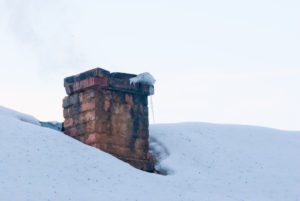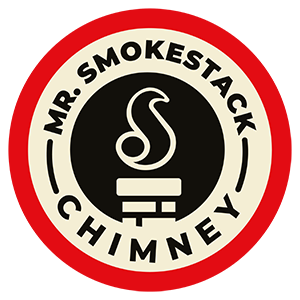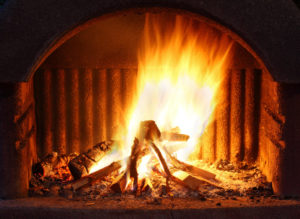Here in the Raleigh area, we have already seen the temperatures drop below freezing this winter, and the cold season is not over yet. The Farmer’s Almanac has predicted that this winter will be even colder than the past few brutally cold winters we have experienced. As the temperatures will drop, heating bills will rise, unfortunately. At Mr. Smokestack Chimney Service, we like to help our customers save money and heat their homes more efficiently. One of those reasons why heating costs can be so expensive has to do with the stack effect, or also known as the chimney effect. Involving the physics of air pressure, the stack effect causes a battle between cold outside air and the the warm inside air in your house. This effect can also be responsible for smoke entering your home as well as for difficulties even getting a fire started in your fireplace. We would like to answer some questions to tell you more about the stack effect and how you can avoid this from happening in your home.

What exactly is the stack effect?
As explained by the Wood Heat Organization, the indoor heated air wants to rise, especially when the temperature outside is significantly colder. The rising hot air creates differences in the pressure inside your home. When the air pressure on the lower level of your home is lower, or negative, and the air pressure on the upper floors of your house is higher, that is the result of the stack effect.
How is my chimney and venting system affected by the stack effect?
Cold air leaking into your home adversely impacts the air pressure balance inside your house, and your chimney is one of the main areas where air leaks occur. Creating negative air pressure, the cold air entering your home makes the stack effect strong enough to force a cold backdraft in a chimney that is cooler than room temperature. Additionally, attempting to light a fire in a chimney with a backdraft can cause smoke to enter the room where the fireplace is located instead of out the chimney.
What are the best ways to avoid chimney and fireplace problems related to the stack effect?
The Wood Heat Organization advises how you can avoid the two main chimney stack effect-related problems with the following solutions:
- When No Fire Is Burning, Cold Air Is Leaking Into the Home Through the Chimney. When this problem occurs, the stack effect has caused a backdraft of cold outdoor air out of your fireplace. You may also notice smoky odors from the chimney exhaust air that has entered your home through the fireplace. To save space, many chimneys are designed with an exterior wall; however, one of the best ways to completely avoid the stack effect is to install the chimney inside your home. This design keeps your chimney in a warm environment with no exposure to cold outdoor air. Mr. Smokestack can show you various different designs and styles of interior chimneys we can install in your home that will add both warmth and beauty to your living space as well as utilize as less space as possible to give you more room.
- When You Open Your Fireplace Doors, Smoke Blows Into the Room. When the stack effect restricts your chimney’s exhaust flow, opening the doors to your fireplace or stove may cause trapped smoky air to come out of the chimney. The best solution to this problem is having a straight chimney. If your chimney has 90 degree turns and offsets, your chimney has places where smoke can get trapped. A chimney with a straight vertical design makes it easier for the smoke to go directly out your chimney without lingering.
Want to learn more about the stack effect? Contact Mr. Smokestack Chimney Service to ask any questions you may have and learn about other winter-related chimney problems from our expert staff.



